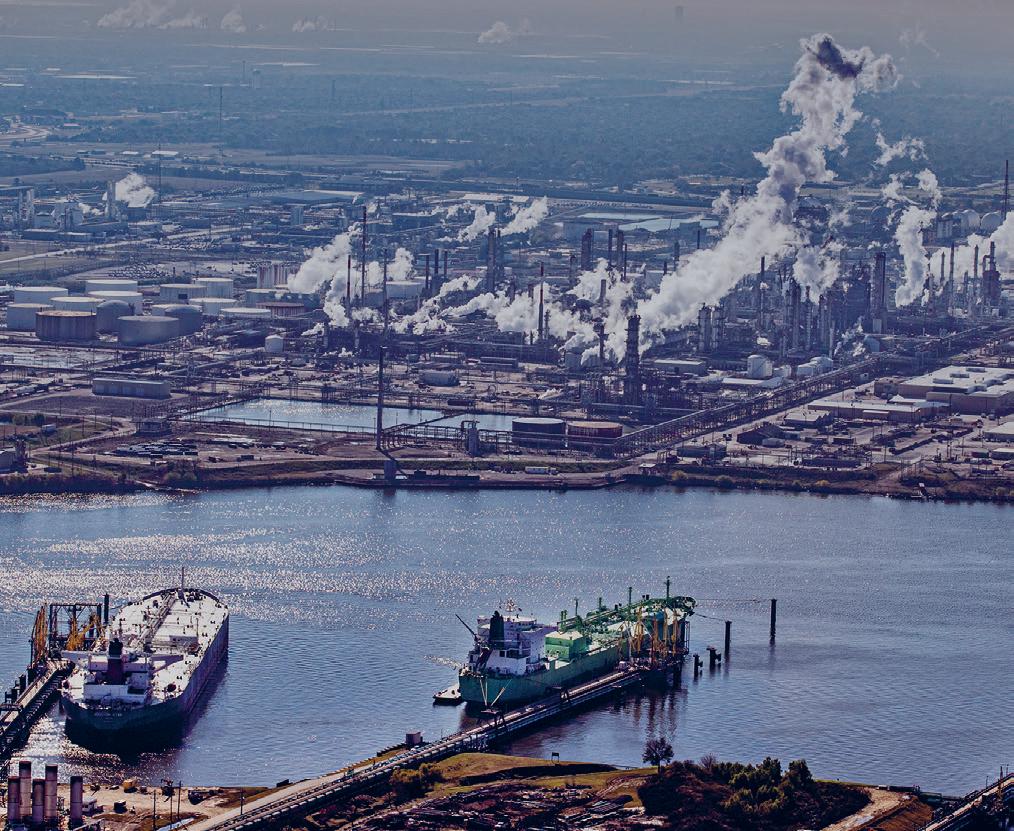
3 minute read
EUROPE – SWITCHING TO U.S. SHALE GAS
EUROPE
SWITCHING TO U.S. SHALE GAS
Advertisement
LA PORTE, TEXAS
La Porte, Texas. Ineos and Braskem oil facilities. © Aaron Sprecher / Greenpeace
AN INEOS 'DRAGON' SHALE GAS SHIP
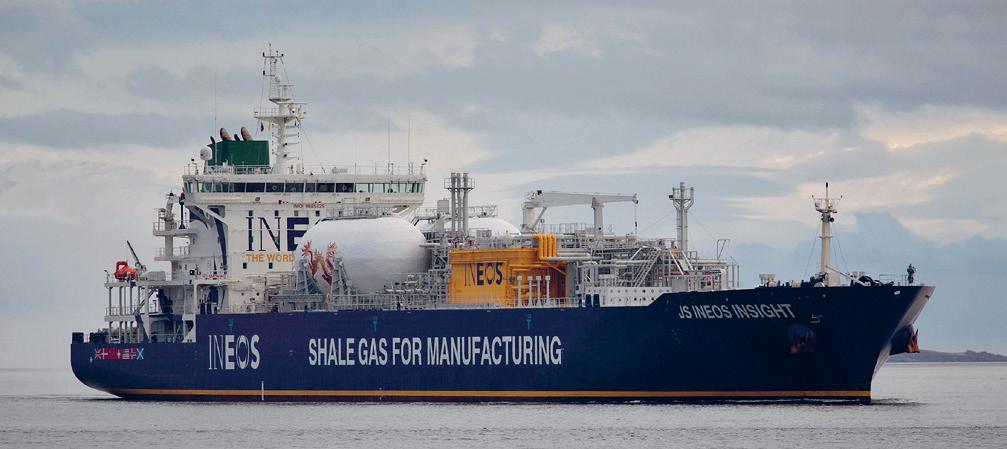
JS Ineos Insight shale gas ship carrying ethane gas to Grangemouth. © Michael McGurk / Alamy Stock Photo
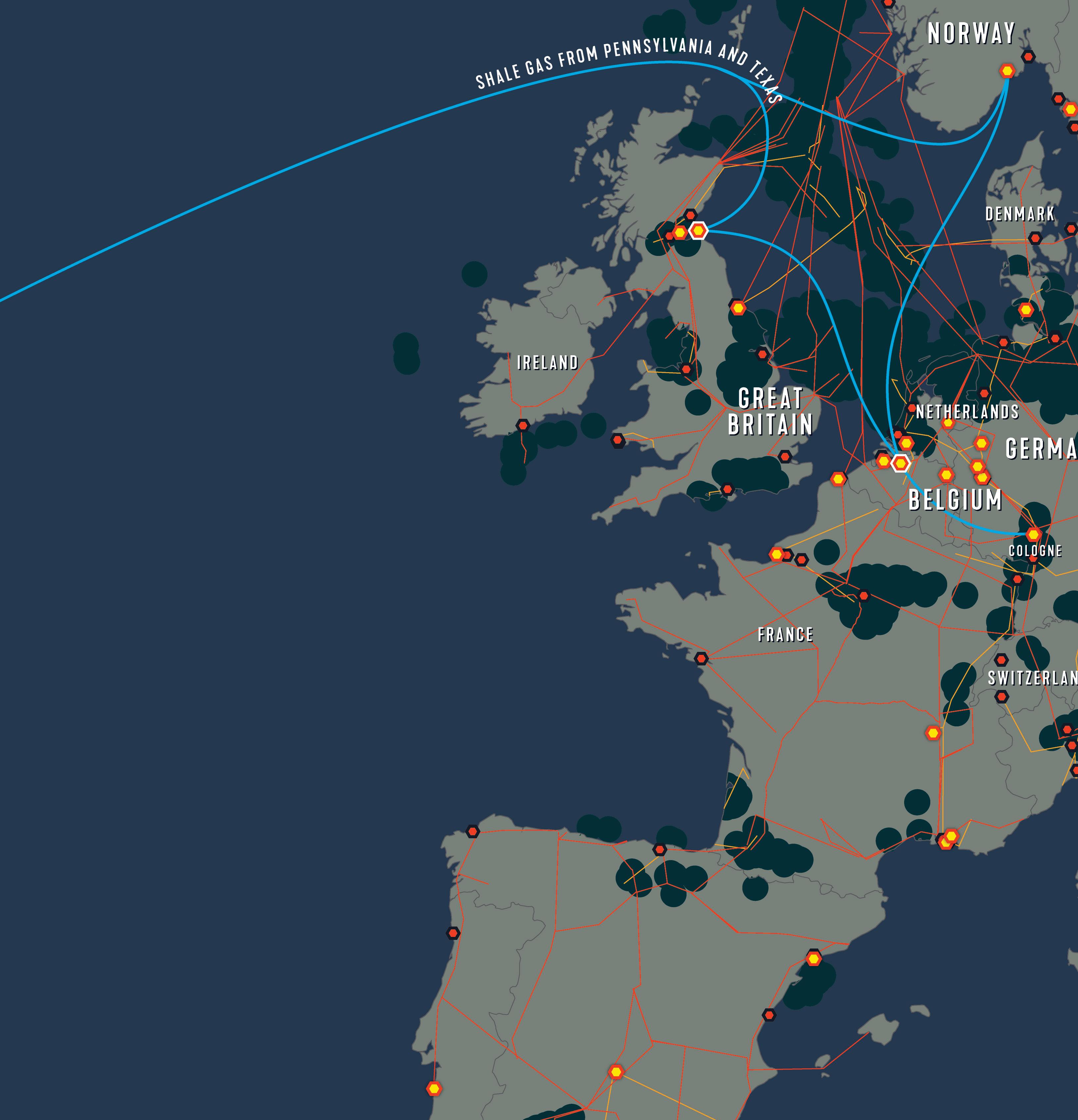
GRANGEMOUTH, UNITED KINGDOM
Grangemouth oil refinery and petrochemical complex is the first plant to import ethane from US shale oil. © Quillpen royalty free stock / Alamy Stock Photo

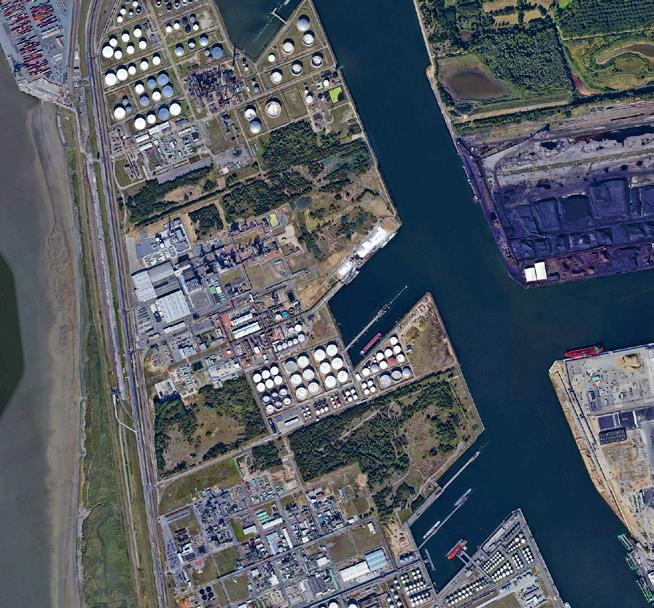
JIM RATCLIFFE, CEO INEOS

'Project one', INEOS, Antwerp, Belgium. Imagery ©2021 Aerodata International Surveys, CNES / Airbus, Landsat / Copernicus, Maxar Technologies, Map data ©2021
Although Europe favors naphtha as a petrochemical feedstock (as was the case in the U.S. until the fracking boom), significant amounts of natural gas liquids (ethane, propane and butane) are also used, and naphtha’s importance as a feedstock in Western Europe was projected to fall by more than 25% between 2010 and 2020.254 The EU is keen to diversify its energy supplies, and in 2018 European Commission President Jean-Claude Juncker pledged to support infrastructure investment to facilitate liquefied natural gas imports from the U.S., which was eager to boost gas exports.255 This trend, along with the low price of U.S. shale gas, is likely to help drive a switch to ethane as a petrochemical feedstock in Europe, along with the associated development of facilities.
The Port of Antwerp in Belgium is the world’s second-largest petrochemical cluster after Houston and sits at the heart of the Western European pipeline network, with dedicated pipeline systems for naphtha, ethylene and propylene, among others, serving a multitude of sites.256 A number of firms are expanding or upgrading their cracking capacity in the region to take advantage of cheap gas feedstocks – including Total, which has upgraded its Antwerp plant in part to enable one cracker to use ethane imported from Norway;257 and Borealis, which has been sourcing U.S. ethane for its cracker in Sweden since 2016258 and is building what will be one of the world’s largest propylene plants at Antwerp.259
However, Anglo-Swiss chemical giant Ineos is the European company that is likely investing most heavily in plans reliant on U.S. fracking. Ineos, which claims to be Europe’s largest ethylene producer,260 has its own fleet of tankers (the so-called Dragon ships) that began importing U.S. shale gas-derived ethane to Europe in 2016. Ineos states that it has invested $2 billion in its U.S. ethane supply chain, including the ships and infrastructure in the U.S. and Scotland, and it has signed 15-year contracts for U.S. ethane.261 In October 2020, Ineos announced that it will also import U.S. butane to Antwerp.262 In 2020, the company itself obtained its first permits to drill in the Texas shales.263 Ineos’s founder has predicted a “shale gas revolution” in the UK264 and has said “Shale gas economics has revitalized U.S. manufacturing. When U.S. shale gas arrives in Europe, it has the potential to do the same for European manufacturing.”265 The company attributes its switch to U.S. shale gas to historic high feedstock prices and poor availability in Europe.266
In 2019, Ineos announced a £3 billion ($4.1 billion) investment in a new ethane cracker – supposedly the first in Europe for 20 years – and a propylene plant at Antwerp, specifically citing the need to compete with the frackingdriven U.S. petrochemical expansion. Both plants are intended to process U.S. shale gas shipped by Ineos.267 Ineos presents the cracker as a low-carbon alternative to crackers that use naphtha, and claims that the two plants’ huge processing capacity will not equate to new plastics production capacity but will simply enable the firm to replace more carbon-intensive feedstock – while also justifying virgin plastic production as necessary to boost the performance of recycled plastic.268 However, in the wake of a delay caused by legal action,269 and facing a poor economic outlook along with the wider petrochemical sector, Ineos suspended construction of the propylene plant in January 2021.270
Oil Refineries Ethylene Cracker Oil pipeline Gas pipeline Oil/Gas Field
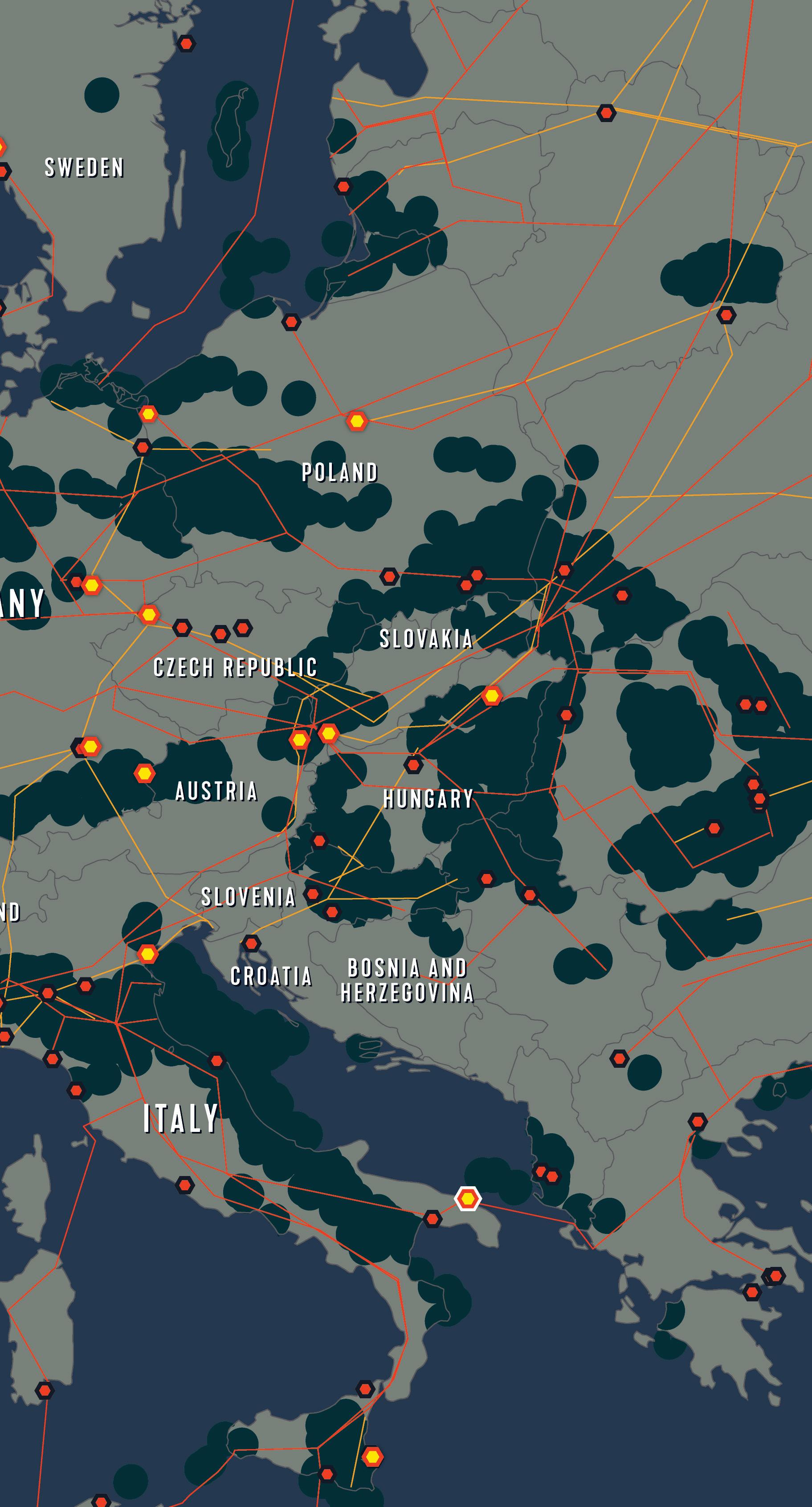
BRINDISI, ITALY Polyethylene and butadiene steamcracking plant.
18 December 2020. Brindisi, Italy. ENI petrochemical plant. © Giuseppe Lanotte / Greenpeace











